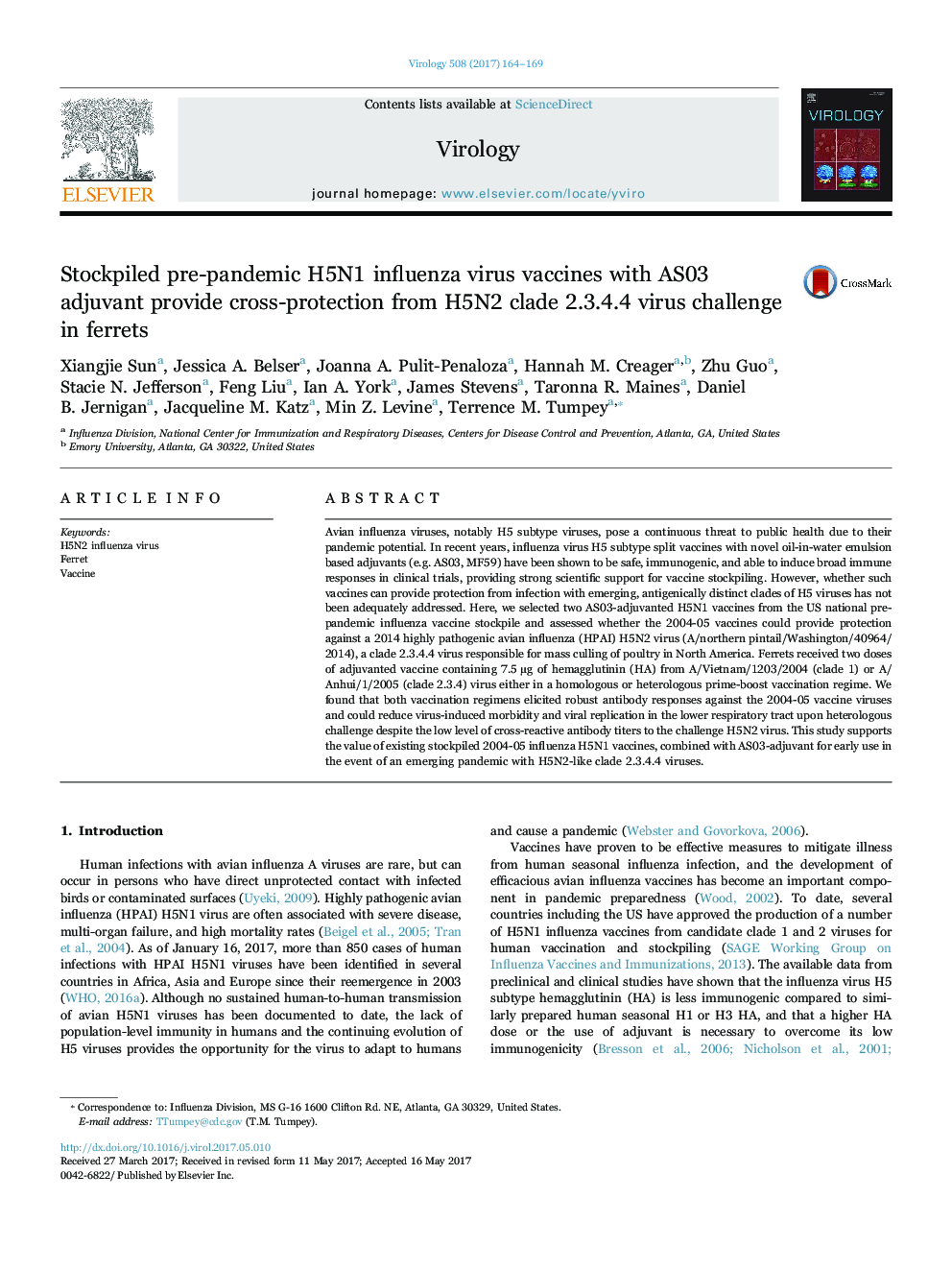| Article ID | Journal | Published Year | Pages | File Type |
|---|---|---|---|---|
| 5675044 | Virology | 2017 | 6 Pages |
Abstract
Avian influenza viruses, notably H5 subtype viruses, pose a continuous threat to public health due to their pandemic potential. In recent years, influenza virus H5 subtype split vaccines with novel oil-in-water emulsion based adjuvants (e.g. AS03, MF59) have been shown to be safe, immunogenic, and able to induce broad immune responses in clinical trials, providing strong scientific support for vaccine stockpiling. However, whether such vaccines can provide protection from infection with emerging, antigenically distinct clades of H5 viruses has not been adequately addressed. Here, we selected two AS03-adjuvanted H5N1 vaccines from the US national pre-pandemic influenza vaccine stockpile and assessed whether the 2004-05 vaccines could provide protection against a 2014 highly pathogenic avian influenza (HPAI) H5N2 virus (A/northern pintail/Washington/40964/2014), a clade 2.3.4.4 virus responsible for mass culling of poultry in North America. Ferrets received two doses of adjuvanted vaccine containing 7.5 µg of hemagglutinin (HA) from A/Vietnam/1203/2004 (clade 1) or A/Anhui/1/2005 (clade 2.3.4) virus either in a homologous or heterologous prime-boost vaccination regime. We found that both vaccination regimens elicited robust antibody responses against the 2004-05 vaccine viruses and could reduce virus-induced morbidity and viral replication in the lower respiratory tract upon heterologous challenge despite the low level of cross-reactive antibody titers to the challenge H5N2 virus. This study supports the value of existing stockpiled 2004-05 influenza H5N1 vaccines, combined with AS03-adjuvant for early use in the event of an emerging pandemic with H5N2-like clade 2.3.4.4 viruses.
Related Topics
Life Sciences
Immunology and Microbiology
Virology
Authors
Xiangjie Sun, Jessica A. Belser, Joanna A. Pulit-Penaloza, Hannah M. Creager, Zhu Guo, Stacie N. Jefferson, Feng Liu, Ian A. York, James Stevens, Taronna R. Maines, Daniel B. Jernigan, Jacqueline M. Katz, Min Z. Levine, Terrence M. Tumpey,
